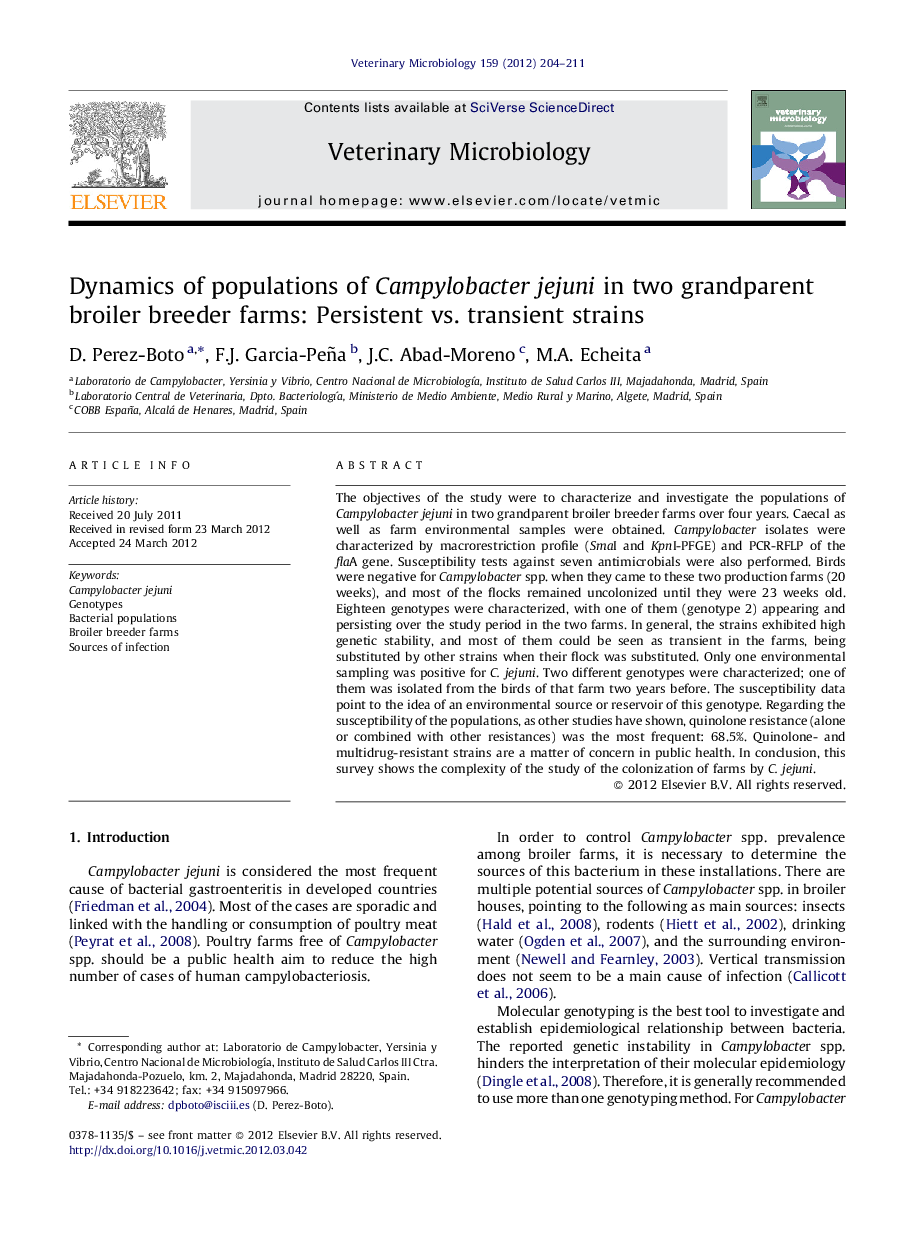| Article ID | Journal | Published Year | Pages | File Type |
|---|---|---|---|---|
| 2467078 | Veterinary Microbiology | 2012 | 8 Pages |
The objectives of the study were to characterize and investigate the populations of Campylobacter jejuni in two grandparent broiler breeder farms over four years. Caecal as well as farm environmental samples were obtained. Campylobacter isolates were characterized by macrorestriction profile (SmaI and KpnI-PFGE) and PCR-RFLP of the flaA gene. Susceptibility tests against seven antimicrobials were also performed. Birds were negative for Campylobacter spp. when they came to these two production farms (20 weeks), and most of the flocks remained uncolonized until they were 23 weeks old. Eighteen genotypes were characterized, with one of them (genotype 2) appearing and persisting over the study period in the two farms. In general, the strains exhibited high genetic stability, and most of them could be seen as transient in the farms, being substituted by other strains when their flock was substituted. Only one environmental sampling was positive for C. jejuni. Two different genotypes were characterized; one of them was isolated from the birds of that farm two years before. The susceptibility data point to the idea of an environmental source or reservoir of this genotype. Regarding the susceptibility of the populations, as other studies have shown, quinolone resistance (alone or combined with other resistances) was the most frequent: 68.5%. Quinolone- and multidrug-resistant strains are a matter of concern in public health. In conclusion, this survey shows the complexity of the study of the colonization of farms by C. jejuni.
